The XJR-15 and XJ220: When Jaguar Tried to Be Cool and Failed

For as long as I’ve been alive, Jaguar has been mired in identity crisis. The main problem has always been the same: the average Jaguar buyer is old. So old, in fact, that a primary bathroom break debate topic at the recent Papal conclave was the best color for an XJL. So how can Jaguar find younger buyers?
Bizarrely, for years, Jag’s answer was: leave our current models exactly how they are. Instead, add new models to attract younger buyers. Somehow, this line of thinking resulted in the creation of a Ford-based station wagon.
The same thought process also led Jaguar to build two disastrously underwhelming 1990s supercars. To no one’s surprise, they didn’t sell, which should’ve been a telltale sign that Jaguar should stay out of the supercar business.
Instead, they went racing.
Jaguar kept its supercars away from ALMS, IMSA, Grand Am and European LeMans. Instead, it chose to compete in two separate one-make race series that somehow even managed to be more ridiculous than the cars themselves.
The XJR-15
Jaguar’s first ‘90s supercar was a mid-engine, V12-powered exotic called the XJR-15. Around 50 examples were built from 1990 to 1992 by Tom Walkinshaw Racing, essentially Jaguar’s racing and tuning arm.
All of this would’ve been fine, except that Jaguar decided to price the car at around $1 million. That’s not $1 million adjusted for inflation, mind you. It’s $1 million in 1991 dollars. In today’s money, that would make it more expensive than a Bugatti Veyron.
Naturally, there were issues with this. One, it was a Jaguar. Back in 1991, Jaguar’s lineup consisted of the “XJ40” XJ sedan, which attracted nationalistic British men with low standards, and the XJS, which attracted no one.
Two, it had only 450 horsepower – and even back then, 450 horses wasn’t enough to reach seven figures. The Ferrari F40 produced more power, cost half as much, and … wasn’t a Jaguar. And three, the XJR-15 only came in right-hand drive. That meant sales would depend on the same nationalistic British men who bought the XJ, and possibly a few wealthy Japanese Anglophiles.
Going Racing
Despite the glaring issues, Jaguar was determined to make a “Halo Car” out of the XJR-15. So, eager for publicity, they invited owners to enter the cars in the three-race “1991 Jaguar Sport Intercontinental Challenge,” so named despite each event taking place in Western Europe. The cars would run before that year’s Formula 1 races at Monaco, Silverstone and Spa, supporting the F1 event and – presumably – gaining notoriety among the crowd. In theory, the young, car-enthusiast F1 fans would see the race, view Jaguar as a viable sports car manufacturer, and quickly rush to their dealers to purchase an XJS.
Sixteen owners actually took Jaguar up on the race series, which meant the courses would be jam-packed with million-dollar supercars driven by a mix of professional drivers and wealthy privateers who thought they were professional drivers.
The results, of course, were exactly as expected. When the series hit Monaco, the XJR-15s hit each other. Most drivers pressed on and returned for Silverstone, where 11 cars were damaged in one single accident. To put this in perspective: imagine 16 Veyrons plowing into each other as they raced around an F1 track. Who wouldn’t watch that?
Apparently, a lot of people. Viewership wasn’t high enough, so Jaguar decided to up the stakes. A few days before the third and final race at Spa, Jaguar announced the winner would receive a $1 million cash prize.
There was just one problem: outside of dirt tracks in West Texas, race car drivers are a clever bunch. So they started forming alliances with one another – things like “you block so-and-so and I’ll share the million with you” – as if they were contestants on Survivor.
To put a stop to this, Jaguar instituted a new rule. The $1 million purse would stand, but no one would know when the checkered flag was going to drop. It could happen on lap three. It could happen on lap 20. The race had just been transformed into a high-stakes game of musical chairs.
As expected, this caused the drivers to push way too hard, since they never knew when leading the race might matter. A veritable demolition derby followed, causing Jaguar to drop the checkered flag after just 11 laps. German racer Armin Hahne crossed the finish line in the lead, earning a seven-figure paycheck for driving just 47 miles.
The Jaguar Sport Intercontinental Challenge was over. And Jaguar’s supercar ambitions should’ve ended along with it.
The XJ220
But, of course, they didn’t. At the same time as the XJR-15 fiasco, Jaguar was developing another supercar which debuted in concept form at the 1988 British Motor Show. At the show, it had scissor doors, four-wheel drive and a V12, prompting dozens of attendees to demand on the spot that Jaguar build the car. So, they did, to disastrous consequences.
Over 1,000 people submitted deposits of around $90,000 when Jaguar announced in 1989 that its new supercar would see production. But the brand only wanted to build 350, so it returned more deposits than it took. Pricing was announced at $580,000, and the automotive world was abuzz.
When the Jaguar supercar finally came out in 1992, there were a few problems. Even though Jaguar had taken millions of dollars, the car had … changed.
For one, it no longer had scissor doors. It also swapped out the concept car’s V12 for a turbo V6. Four-wheel drive was gone. And despite its “XJ220” moniker, intended to boast about its top speed, no one ever got it past 217 miles per hour. It didn’t help that the XJ220 was wider than a Chevrolet Suburban and only a few inches shorter than a Tahoe.
These facts, coupled with a worsening economic recession, caused hundreds of people to request their deposits back. In some cases, Jaguar refused, which led to lawsuits. In other words, people sued Jaguar just so they wouldn’t have to buy the thing. The entire situation was a mess, but one thing was for sure: the XJ220 was going to be built. After all, Jaguar just had to attract those younger buyers.
Going Racing, Again
When all was said and done, Jaguar simply couldn’t sell its entire XJ220 production run, which eventually included around 280 cars – far fewer than the 350 it planned to build, and way below the 1,500 deposits it initially collected. Unsold inventory piled up, and Jaguar dealers had no interest in floorplanning a half-million dollar supercar. Something had to be done.
That something was called “Fast Masters.”
Fast Masters was a one-make, ESPN-televised race series that featured the behemoth cars ambling around the tight, 2.5-mile road course at Indianapolis Raceway Park. Naturally, this was a recipe for disaster appropriately described by a period article as “racing thoroughbreds around a dining room table.” Enthusiasts quickly dubbed the event “Crash Masters.”
To pile absurd on top of ridiculous, the XJ220 drivers weren’t serious pros or even up-and-comers trying to “make it” in the world of racing. Instead, Jaguar recruited the market it knew best: retirees. Every single car was piloted by a retired race car driver (dubbed “Past Masters”), perhaps proving that Jaguar actually wanted these things destroyed – especially since the races were run at night. It would be easier than selling them.
After exchanged paint and some twisted metal, Fast Masters ended and Jaguar wisely left the supercar business forever.
The Supercars Today
Neither the XJ220 nor the XJR-15 ever gained a following on the used market, and their values quickly entered the same free fall as the rest of Jaguar’s lineup. Today, the cars are 20 years old and function quite like any other 20-year-old Jaguar: expensively.
These days, XJR-15s sell for around $200,000. That’s more like the ceiling for an XJ220, with some examples closer to the $150,000 range. By comparison, the Ferrari F50 – priced similarly to the XJ220 when it came out in 1995 – typically trades between four and five times that figure. Of course, part of that is due to Ferrari’s pedigree and the F50’s place in the brand’s heritage.
But some of the F50’s premium comes from the Ferrari’s relative ease of maintenance. On the flip side, arriving at a Jaguar dealer in an XJ220 would elicit camera phone shots from the technicians and pleas from the sales staff to buy an XKR-S. But it wouldn’t result in any real service. That’s because virtually the only place that will touch an XJ220 is Don Law Racing, which is located in Staffordshire, England.
Yes, I am suggesting that maintaining your XJ220 will require shipping it to England. And since it’s an old Jaguar, that probably happens a lot.
These days, the XJR-15 and XJ220 are probably best as static garage art, likely owned by the same old people Jaguar was trying to avoid in the first place. Even on display, they’re beautiful reminders of the time Jaguar tried to make it in the supercar business – and failed miserably.
Doug DeMuro operates PlaysWithCars.com. He’s owned an E63 AMG wagon, road-tripped across the US in a Lotus without air conditioning, and posted a six-minute lap time on the Circuit de Monaco in a rented Ford Fiesta. One year after becoming Porsche Cars North America’s youngest manager, he quit to become a writer. His parents are very disappointed.

More by Doug DeMuro
Latest Car Reviews
Read moreLatest Product Reviews
Read moreRecent Comments
- W Conrad I'm not afraid of them, but they aren't needed for everyone or everywhere. Long haul and highway driving sure, but in the city, nope.
- Jalop1991 In a manner similar to PHEV being the correct answer, I declare RPVs to be the correct answer here.We're doing it with certain aircraft; why not with cars on the ground, using hardware and tools like Telsa's "FSD" or GM's "SuperCruise" as the base?Take the local Uber driver out of the car, and put him in a professional centralized environment from where he drives me around. The system and the individual car can have awareness as well as gates, but he's responsible for the driving.Put the tech into my car, and let me buy it as needed. I need someone else to drive me home; hit the button and voila, I've hired a driver for the moment. I don't want to drive 11 hours to my vacation spot; hire the remote pilot for that. When I get there, I have my car and he's still at his normal location, piloting cars for other people.The system would allow for driver rest period, like what's required for truckers, so I might end up with multiple people driving me to the coast. I don't care. And they don't have to be physically with me, therefore they can be way cheaper.Charge taxi-type per-mile rates. For long drives, offer per-trip rates. Offer subscriptions, including miles/hours. Whatever.(And for grins, dress the remote pilots all as Johnnie.)Start this out with big rigs. Take the trucker away from the long haul driving, and let him be there for emergencies and the short haul parts of the trip.And in a manner similar to PHEVs being discredited, I fully expect to be razzed for this brilliant idea (not unlike how Alan Kay wasn't recognized until many many years later for his Dynabook vision).
- B-BodyBuick84 Not afraid of AV's as I highly doubt they will ever be %100 viable for our roads. Stop-and-go downtown city or rush hour highway traffic? I can see that, but otherwise there's simply too many variables. Bad weather conditions, faded road lines or markings, reflective surfaces with glare, etc. There's also the issue of cultural norms. About a decade ago there was actually an online test called 'The Morality Machine' one could do online where you were in control of an AV and choose what action to take when a crash was inevitable. I think something like 2.5 million people across the world participated? For example, do you hit and most likely kill the elderly couple strolling across the crosswalk or crash the vehicle into a cement barrier and almost certainly cause the death of the vehicle occupants? What if it's a parent and child? In N. America 98% of people choose to hit the elderly couple and save themselves while in Asia, the exact opposite happened where 98% choose to hit the parent and child. Why? Cultural differences. Asia puts a lot of emphasis on respecting their elderly while N. America has a culture of 'save/ protect the children'. Are these AV's going to respect that culture? Is a VW Jetta or Buick Envision AV going to have different programming depending on whether it's sold in Canada or Taiwan? how's that going to effect legislation and legal battles when a crash inevitibly does happen? These are the true barriers to mass AV adoption, and in the 10 years since that test came out, there has been zero answers or progress on this matter. So no, I'm not afraid of AV's simply because with the exception of a few specific situations, most avenues are going to prove to be a dead-end for automakers.
- Mike Bradley Autonomous cars were developed in Silicon Valley. For new products there, the standard business plan is to put a barely-functioning product on the market right away and wait for the early-adopter customers to find the flaws. That's exactly what's happened. Detroit's plan is pretty much the opposite, but Detroit isn't developing this product. That's why dealers, for instance, haven't been trained in the cars.
- Dartman https://apnews.com/article/artificial-intelligence-fighter-jets-air-force-6a1100c96a73ca9b7f41cbd6a2753fdaAutonomous/Ai is here now. The question is implementation and acceptance.

























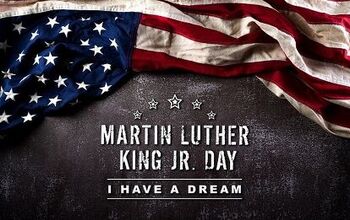
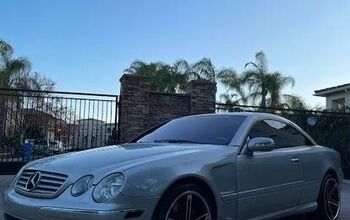
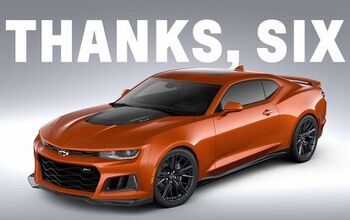
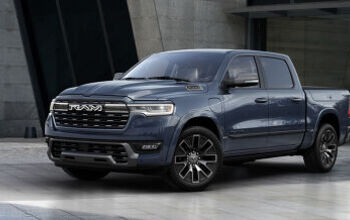
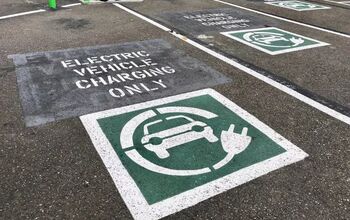
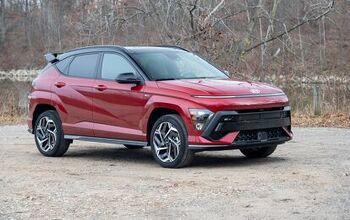
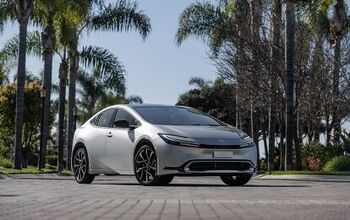
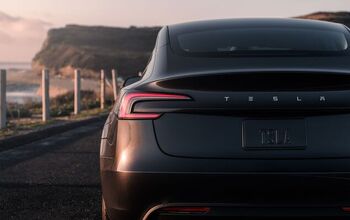
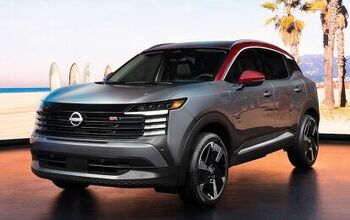
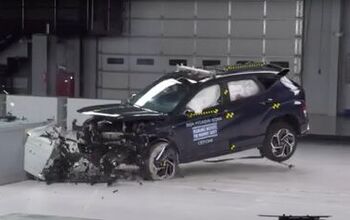


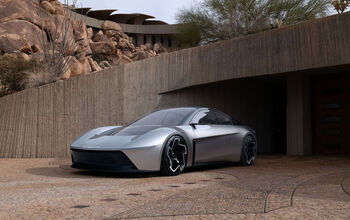
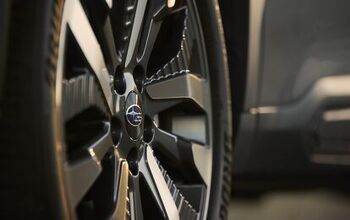
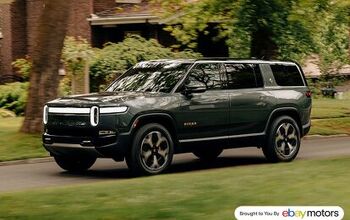
Comments
Join the conversation
"That’s because virtually the only place that will touch an XJ220 is Don Law Racing, which is located in Staffordshire, England. Yes, I am suggesting that maintaining your XJ220 will require shipping it to England. And since it’s an old Jaguar, that probably happens a lot." What a load of bollocks...What is so special about the innards of an XJ220 that it requires that level of specialist? Answer nothing. Probably the only issue is parts supply.
There are those that talk about these cars and then there are those that own them. I am always fascinated to read the so called facts about the 220 and the 15. I own both models and nobody sued me to buy them. I was at the 1988 motor show in Birmingham (UK) when the XJ220 was revealed. Bar none, in terms of motor manufacturers at the show, it blew them all away. It was an awesome sight and the sheer scale of the car was amazing. Tom Walkinshaw, the boss of TWR was at the show with Peter Stevens, the designer of the XJR-15 and the McLaren F1. Walkinshaw asked Stevens if he could come up with something better, and as a car designer, he of course said yes.... and this was the beginning of the XJR 15 story. At this point TWR had not been commissioned to build the XJ220 and when they were asked to do so this presented a conflict of interest. In fact the XJR-15 was the source of much friction between Jaguar and TWR when the XJR-15 emerged. As a result of the friction between the two, the XJR 15 was never fully developed as such. In principle there appears to be three versions of the car. There is the race car, a 6Ltr, 6 speed crash box, stripped out version, a road car which was also 6Ltr but with a 5 speed synchro box, air conditioning and good road manners and finally a quite rare LM version said to have a 7Ltr engine with a 5 speed synchro box, air conditioning and a modified body to improve handling. These are basically race cars with no creature comforts and are akin to the sparse specification of the F40. For the car buff, the XJR-15 is good to look at, it is very rare, sounds great and goes like stink (or a bat out of hell if you prefer). For the armchair critic it is a rich source of Jaguar ridicule (for a car that has never seen the inside of a Jaguar factory or showroom), and then there is the driver.....now that’s a different story. In truth I have a road and race car. The first time I drove the race car on the public highway, it was a great thrill. I have converted the car to street legal in the UK, just a few modifications were required such as a hand break and a horn. The car has certain draw backs if you are tall, but what a great thing to drive on the road. It is like being in charge of your very own roller coaster. It takes a while to get to grips with the 6 speed crash box, but well worth the effort. I have owned and or driven all sorts of exotic cars, including some track time in an F1 car and I can honestly say that the XJR 15 is fabulous. Following my first drive, I think I had a grin on my face for days afterwards. The road car is less fierce than the race version, but still a great drive. The XJ 220 is a pleasure to own. My car has straight through exhausts, and whilst I agree that the engine rattles at idle, you should here it when it’s on song. I drove mine through London a couple of years ago on a super car run and the video was posted on Youtube, it sounded fantastic. Inside the car the space if excellent, unlike the XJR 15 which is cramped, the seats are very comfortable and once the car is doing 70 mph or so it is quiet and smooth. An excellent long distance GT car. Whilst the 0 – 60 mph time of 3.5 seconds is impressive, the 7.8 seconds for 0-100mph is awesome. The XJ220 is still in the top 10 (or so) fastest cars ever built. For the owners of these cars it’s much more about the experience of driving and owning them than picking holes in what the dash looks like, or what car did this switch come out of. When Jaguar announced the format for placing an order of an XJ 220, through JaguarSport appointed dealerships, I was very tempted to place an order. The power plant for me was never an issue. They wanted a £50k deposit, plus Vat at 15%. Whilst that was a bit tricky, the main issue was that the final price for the car was open ended. It was a basic price of around £350 – 400k (as I recall) and then subject to increase based on the RPI with no actual delivery date. I though that was a bit of a lottery and I decided not to play. I knew a number of people who were just speculators who placed orders, some were awarded orders. As I recall the power plant for the car was never specified, but people assumed that it would be the V12. To put the market in perspective, at the time Jaguar were marketing the XJ 220, so late 1989, here in the UK, F40’s were changing hands for circa £1m and a Testarossa was about £350k. By comparison the XJ220 was not that expensive. Of course in the post 1990 recession era where the second hand market saw F40 tumble to about £125k and a Testsrossa was about £35k, the XJ220 at £460k looked ridiculous. As a result it was not surprising that the speculators, who had lost their proverbial shirts on other supercars tried to get out of their contracts for the XJ220. Properly wealthy people just paid up and bought the car they had ordered. I have no doubt that many of them were a little sore in doing so, but pay up they did. The speculators had placed their deposits for £50k, so Jaguar had that. Those that Jaguar litigated against had to pay a further £75k + to hand back their orders, and then the remaining cars were sold. Eventually a jaguar Dealer called Grange bought up the remaining cars, all left hand drive and they were sold over a period. I don’t know what Grange paid for them, but they were selling them for between £175 – 225k. So whilst the XJ220 was a PR mess, it was not the financial disaster that the motoring media liked to promote it as. Currently in the UK a nice XJ220 will set you back around £250k and an F40 is about £350k. In terms of servicing and maintenance, Don Law has really become the centre for this for both the XJ220 and the XJR 15. As far as I know he is happy to ship parts and provide technical support. I have always found his firm to be very helpful and without him it might be that the XJ220 would be in a very bad place right now. In my view it is to Jaguar’s detriment that they have not fully supported these cars, but that may be partly due to the falling out with TWR, who after all, were the manufacturers of the cars.